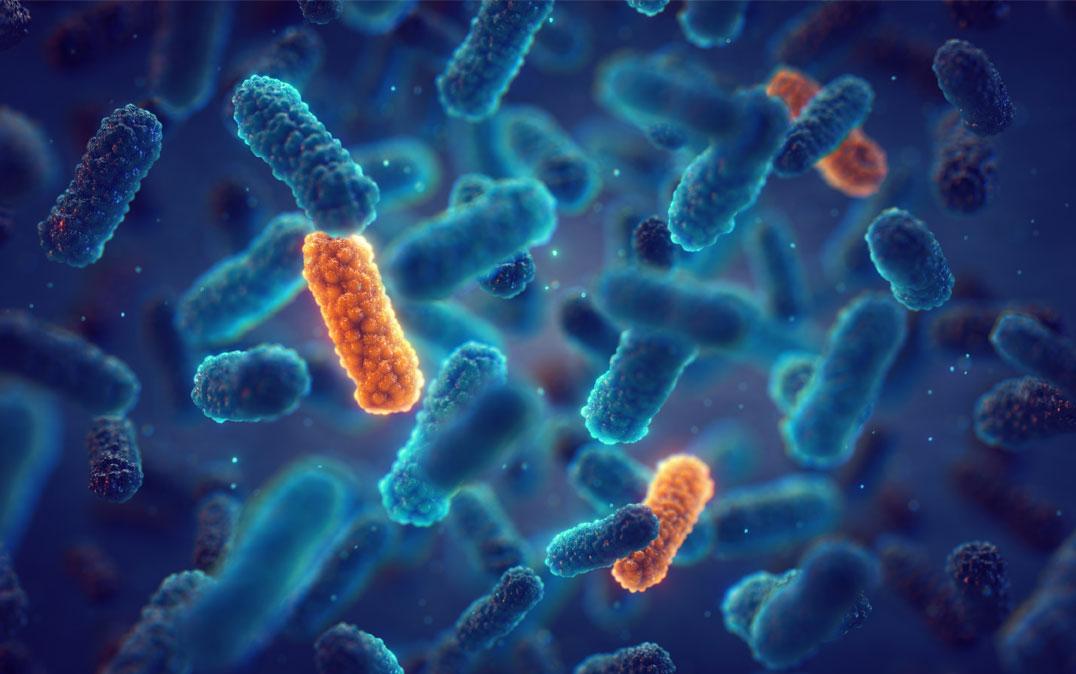Research News
New Insights into Bacterial Antibiotic Resistance
 Image by nobeastsofierce/Shutterstock
Image by nobeastsofierce/ShutterstockResearchers from the University of Tsukuba have discovered the characteristics of proteins in certain bacteria that convey antibiotic resistance
Tsukuba, Japan—Antibiotic resistance (ARE) is a threat to human health worldwide, as diverse proteins allow pathogenic bacteria to develop increasing levels of resistance to antibiotic medicines. Now, a team from the University of Tsukuba have discovered the characteristics of certain proteins known as ARE-ABCFs from three different bacteria, providing insights into their function and role that, with other resistance mechanisms, convey very powerful combined resistance.
Antibiotics often target the bacterial ribosome, the machinery within a cell that produces proteins. Bacteria therefore develop ways to protect the ribosome as ways to resist antibiotics. The ARE-ABCF proteins are associated with ribosomal antibiotic resistance in various bacteria. The expression of the ARE-ABCFs is induced by an antibiotic challenge -- when the bacteria encounter an antibiotic and the ribosome "stalls" the process of translation that makes proteins, the ARE-ABCFs are activated and the resistance mechanisms work to protect the bacteria.
A class of bacteria called "Clostridia" contains some important human pathogens, such as Clostridium perfringens that causes food poisoning, and Clostridioides difficile that has a high level of antibiotic resistance and can cause chronic infections, diarrhea, and dangerous "nosocomial" infections that patients acquire after admission to hospital or other healthcare facilities.
"The risk of infection with C. difficile is known to increase after treatment with an antibiotic called clindamycin, but the reason for this was unknown," says lead author Assistant Professor Nozomu Obana. "Our research showed that the ARE-ABCF found in Clostridia bacteria, called CplR, conveys resistance to the class of antibiotics to which clindamycin belongs."
The research team also showed that CplR can work in synergy with another method of antibiotic resistance mediated by a protein called "Erm". Erm adds a molecule called a methyl group onto the ribosomal RNA, the primary component of the ribosome. This methylation conveys resistance to other classes of antibiotic.
"These two mechanisms working in synergy results in extremely high levels of antibiotic resistance, even to a synthetic antibiotic that is usually effective against resistant bacteria," explains lead author Professor Obana. This provides a reason for why treatment with clindamycin, inducing expression of CplR, can lead to an increased risk of C. difficile infection.
This study provides insights into resistance mechanisms in human pathogens that have direct clinical importance. These findings will assist in the development of new antibiotics that could stall the ribosome in novel ways that do not induce the expression of ARE-ABCF resistance proteins.
###
This work was supported by the Deutsche Forschungsgemeinschaft (DFG) (grant WI3285/8-1 to D.N.W), Swedish Research Council (Vetenskapsrådet) grants (2019-01085 to G.C.A., 2017- 03783 and 2021-01146 to V.H.), Cancerfonden (20 0872 Pj to V.H.), the Estonian Research Council (PRG335 to V.H.), the National Institute Of Allergy And Infectious Diseases of the National Institutes of Health (R01AI168228 to A.G.M.) and the European Union from the European Regional Development Fund through the Centre of Excellence in Molecular Cell Engineering (2014-2020.4.01.15-0013 to V.H.). V.H. and D.N.W. groups are also supported by the Swedish Research Council (2018-00956 to V.H.) and the Deutsche Zentrum für Luft- und Raumfahrt (DLR01Kl1820 to D.N.W.) within the RIBOTARGET consortium under the framework of JPIAMR. G.C.A. and V.H. were also supported by a project grant from the Knut and Alice Wallenberg Foundation (2020-0037 to G.C.A.). H.T. was supported by JST, ACT X, Japan grant 26 JP1159335. N.O. was supported by JSPS KAKENHI Grant Number 21K07018. K.J.Y.W. was supported by a National Science Scholarship (PhD) by the Agency for Science, Technology and Research, Singapore.
Original Paper
- Title of original paper:
- Genome-encoded ABCF factors implicated in intrinsic antibiotic resistance in Gram-positive bacteria: VmlR2, Ard1 and CplR
- Journal:
- Nucleic Acids Research
- DOI:
- 10.1093/nar/gkad193
Correspondence
Assistant Professor OBANA NozomuFaculty of Medicine, University of Tsukuba






